Key Takeaways
-
Identification: Red carpenter ants have a reddish thorax and black abdomen, while black carpenter ants are entirely black. Both species range in size from 7 to 20 mm.
-
Nesting Habits: Carpenter ants nest in both moist and dry wood, often in areas with water damage or high humidity, like attics, crawl spaces, and basements.
-
Damage Symptoms: Look for sawdust-like debris (frass), hollow-sounding wood, rustling noises, and winged ants (swarmers) as signs of a well-established colony.
-
Infestation Control: Seal entry points, eliminate moisture sources, store firewood away from your home, and trim tree branches to prevent access.
-
Effective Treatments: Use bait stations, insecticide dust, or seek professional pest control for large infestations to eliminate carpenter ant colonies.
-
Myth Busting: Both red and black carpenter ants can cause significant damage to wooden structures, and they feed on a variety of substances, like proteins and sugars, not just wood.
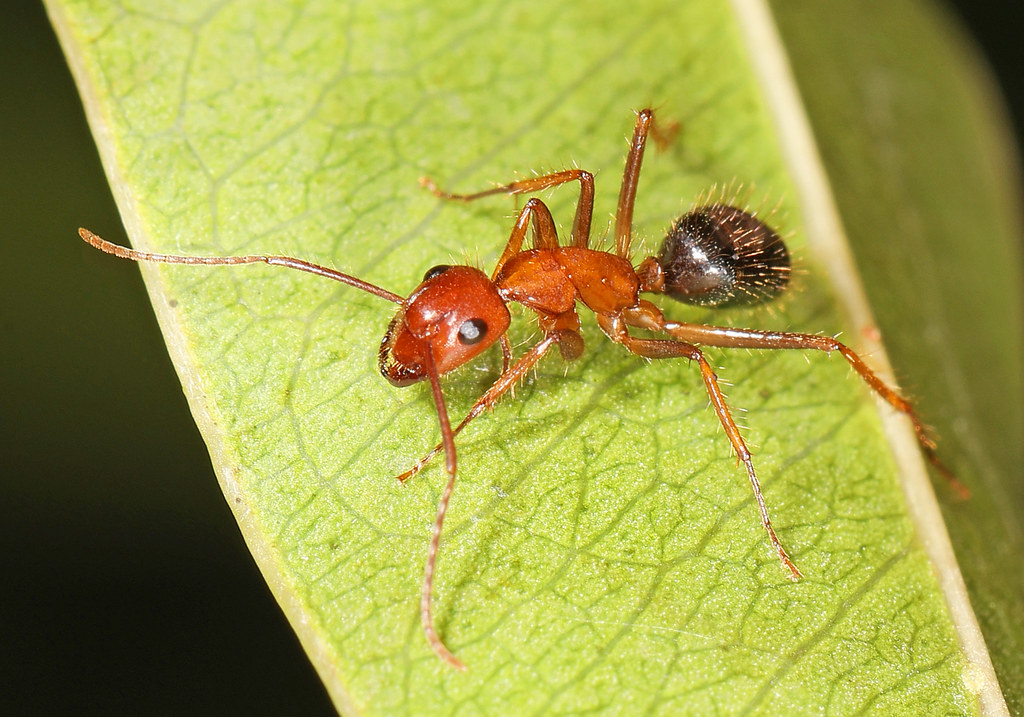
What Are Red and Black Carpenter Ants?
Carpenter ants belong to the Camponotus genus, which consists of over 1,000 species worldwide. These ants establish their nests inside the wood, tunnelling through the material to create smooth passageways for their colony. They do not eat wood but instead excavate it to expand their nests. Their colonies can become quite large, leading to extensive damage over time.Physical Characteristics of Red and Black Carpenter Ants
-
Size: Worker ants range from 7 to 20 mm, while queen ants are significantly larger.
-
Color: Red carpenter ants have a reddish thorax and a black abdomen. Black carpenter ants are entirely black.
-
Antennae: Carpenter ants have elbowed antennae, which help distinguish them from termites.
-
Thorax Shape: They have a smooth thorax, unlike many other ant species, which have uneven or segmented thoraxes.
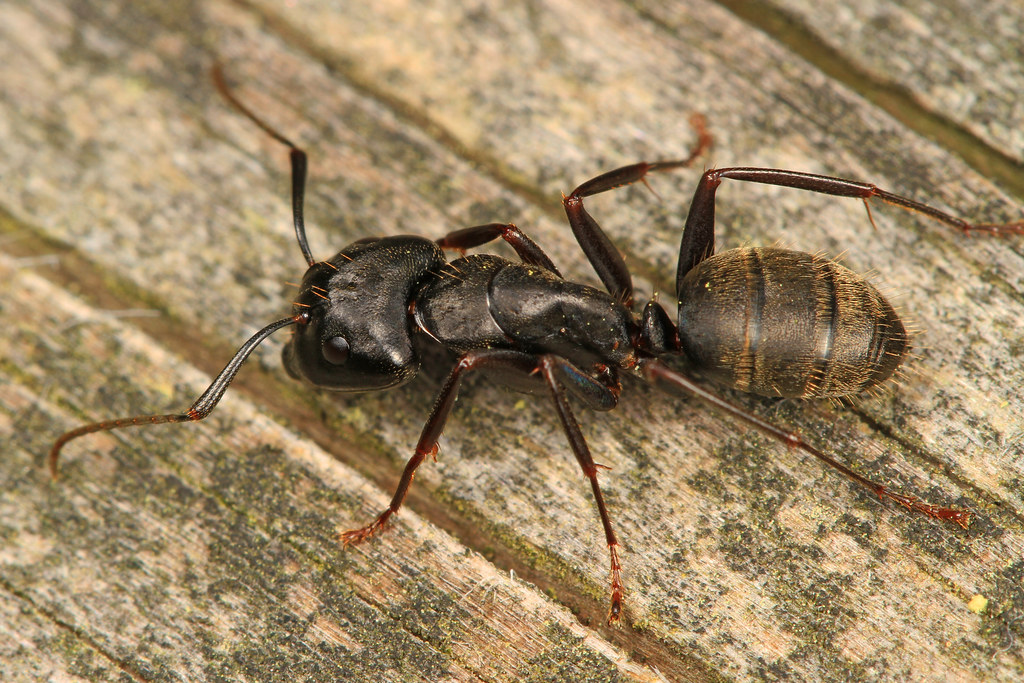

Not getting a solution?
Get your free pest control estimate today!Key Differences Between Red and Black Carpenter Ants
Though similar in behavior and habits, red and black carpenter ants have distinct characteristics:| Feature | Red Carpenter Ants | Black Carpenter Ants |
|---|---|---|
| Color | Reddish thorax, black abdomen | Entirely black |
| Size | 7 to 20 mm | 7 to 20 mm |
| Preferred Habitat | Moist, decaying wood | Both moist and dry wood |
| Diet | Honeydew, sweet foods, dead insects | Honeydew, proteins, dead insects |
| Aggressiveness | Less aggressive than black carpenter ants | More aggressive, particularly when disturbed |
Where Do Carpenter Ants Nest?
Carpenter ants are social insects that thrive in moist, decaying wood. They do not build mud tubes like termites but create extensive tunnels inside wooden structures. Their presence is often a sign of water damage in a home. Carpenter ants establish their nests both outdoors and indoors, depending on the availability of suitable conditions. Outdoors, they commonly build nests in trees, logs, and wooden stumps, often residing in decaying or moisture-damaged wood. They are also frequently found in firewood piles. Indoors, carpenter ants burrow into wooden beams, attics, floors, and walls, preferring areas with high humidity or water leaks that soften the wood, making excavating easier.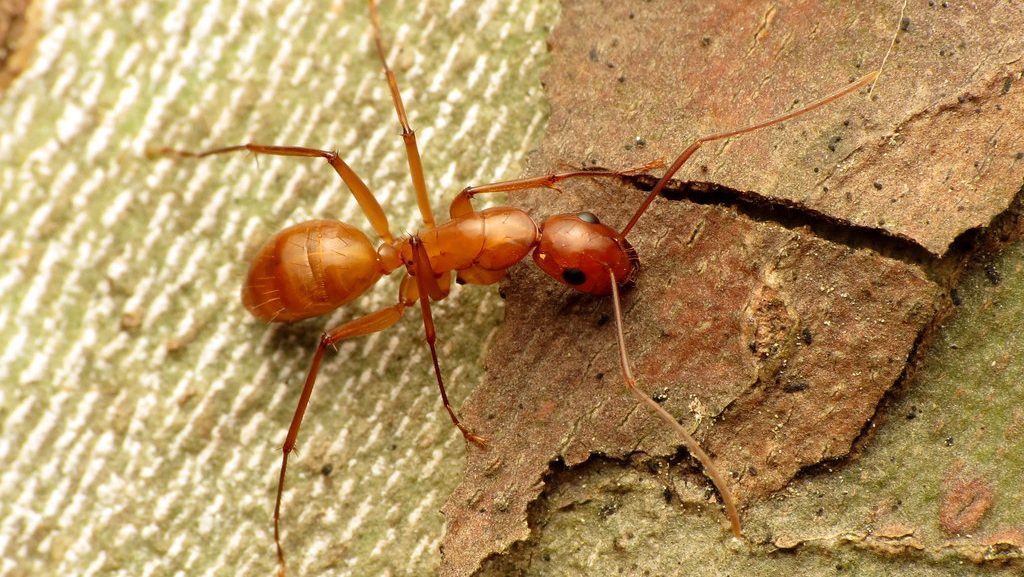
What Do Carpeneter Ants Eat?
Carpenter ants don’t feed on wood but instead tunnel through it to create nests. Their diet primarily consists of dead insects, honeydew (a sugary substance secreted by aphids), and various sweet foods such as fruits, syrups, and sugary substances. They are nocturnal foragers, often traveling significant distances in search of food sources.Signs of a Carpenter Ant Infestation
Detecting an infestation early is crucial for preventing long-term structural damage. Watch for these warning signs:Sawdust or Frass
Carpenter ants leave behind tiny piles of sawdust-like debris, known as frass, near wooden surfaces. This is a result of their tunneling activity.Rustling Noises
In some cases, you may hear a faint rustling or scratching noise coming from inside walls or wooden structures, especially at night when the ants are most active.Winged Ants (Swarmers)
During mating season, winged carpenter ants emerge from nests to establish new colonies. If you notice large, flying ants indoors, it’s a strong indication of a well-established colony nearby.Hollow or Weak Wood
Tapping on a wooden structure and hearing a hollow sound suggests internal damage caused by carpenter ants burrowing inside.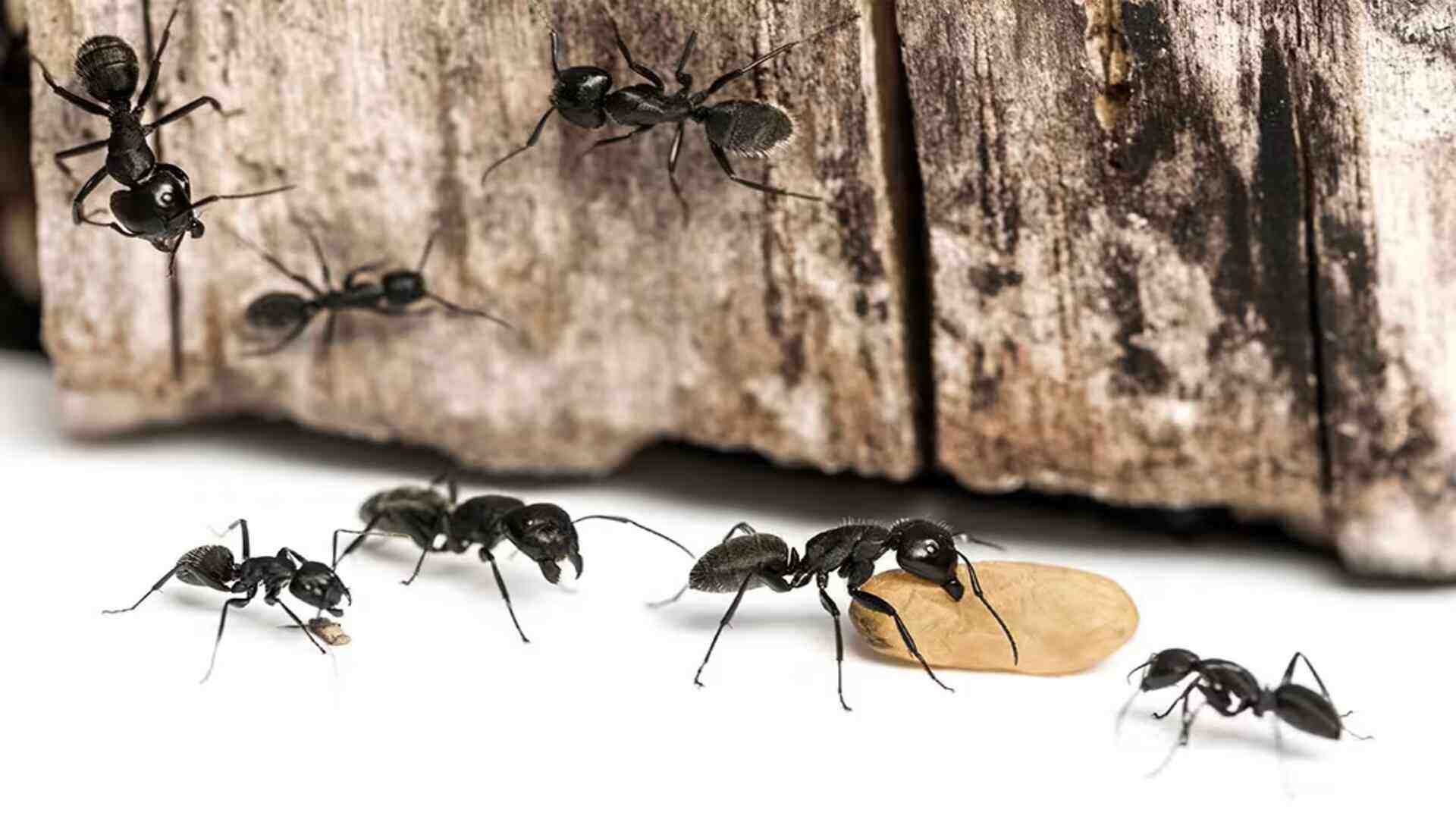
Damage Caused by Red and Black Carpenter Ants
Carpenter ants can cause serious structural issues over time. Their excavation weakens beams, flooring, rafters, and wooden supports, making homes vulnerable to long-term damage.How Carpenter Ants Damage Wood
-
Tunneling Behavior: They create smooth, tunnel-like galleries in wood, weakening its integrity.
-
Preference for Moist Wood: They prefer moist or decaying wood, often worsening pre-existing water damage.
-
Colony Expansion: Over time, their colonies expand, leading to widespread hollowing of wooden structures.
-
Structural Risk: Prolonged infestations can compromise the stability of homes, particularly in attics, crawl spaces, and basements.
-
Delayed Detection: Carpenter ant damage often goes unnoticed for months or years, leading to costly repairs.
Prevention Tips for Red & Black Carpenter Ants
Carpenter ants are drawn to moisture and wooden structures, so controlling these factors is key to keeping them out of your home. To stop carpenter ants from entering your home, follow these best practices:Preventing Carpenter Ant Infestations
-
Seal Entry Points: Close cracks around doors, windows, and foundation walls to block potential entryways.
-
Fix Water Leaks: Repair any roof leaks, plumbing issues, or damp basements to eliminate moisture sources.
-
Store Firewood Away from Your Home: Keep wood piles, dead trees, and tree stumps at least 20 feet from your house.
-
Trim Tree Branches: Prevent carpenter ants from gaining access by cutting overhanging branches near your roof.
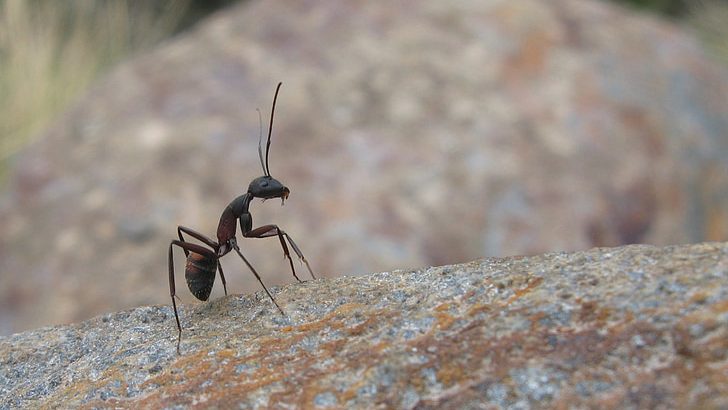
How to Control Red and Black Carpenter Ants
-
Baiting: Place ant bait stations near high-traffic areas. The ants might take the bait back to their colony, eventually eliminating it.
-
Insecticide Dust: Apply insecticide dust or sprays to known nesting areas.
-
Professional Treatment: If the infestation is severe, calling pest control experts ensures complete colony elimination.
Common Myths & Facts
Carpenter ants are often mistaken for termites due to their ability to damage wood but have distinct behaviors and characteristics. Many misconceptions exist about the differences between red and black carpenter ants, their diet, and their nesting habits. Understanding the facts can help in early detection and proper control measures. Below, we debunk common myths about these wood-damaging insects.| Myth | Fact |
|---|---|
| Red carpenter ants are more dangerous than black ones. | Both red and black carpenter ants can be responsible for significant damage if left unchecked. |
| Carpenter ants only eat wood. | Carpenter ants feed on a variety of substances, including proteins and sugars. |
| Black carpenter ants are not as destructive as red ones. | Both species can cause serious damage to wooden structures. |
| Carpenter ants are only found in damp wood. | Carpenter ants can nest in both damp and dry wood. |
| All carpenter ants are the same species. | There are several species of carpenter ants, including red and black varieties, each with distinct behaviors and preferences. |





